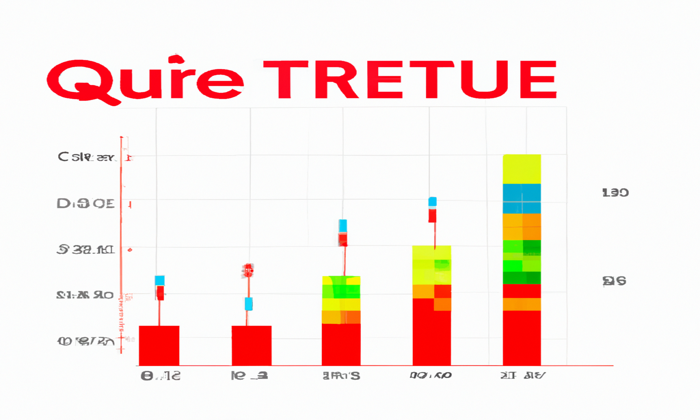Covered Stablecoins are gaining attention as the U.S. Securities and Exchange Commission (SEC) provides new guidelines for this emerging asset class. These stablecoins are designed to maintain a consistent value relative to the U.S. dollar, ensuring that each token is redeemable for a dollar at a 1:1 ratio. The SEC’s focus on Covered Stablecoins reflects its broader goal of offering regulatory clarity amid increasing interest in crypto assets and stablecoin regulation. By distinguishing these stablecoins from others, such as algorithmic or yield-bearing variants, the SEC allows investors to better understand their risks. This clarity could influence future investing in stablecoins, particularly as comparisons arise between leading options like Tether and USDC.
The landscape of digital currencies is evolving, and alternative forms of stable digital tokens are at the forefront of this transformation. Synonymous with stability, Covered Stablecoins represent a category of coins that aim to align closely with the U.S. dollar, providing a safer haven in the volatile world of cryptocurrency. As cryptocurrency regulation becomes increasingly stringent, particularly with the SEC’s recent guidance, discussions about the implications of these tokens are essential for anyone looking to navigate securities laws. This shift has prompted investors to analyze the viability of leading stablecoins against one another, fostering a clearer understanding of their respective roles and functionalities. Engaging in the debate over investing in stablecoin options, especially against a backdrop of regulatory transparency, can help investors make informed decisions.
Understanding Covered Stablecoins and Their Regulatory Status
The SEC’s recent guidance on stablecoins introduces the concept of “Covered Stablecoins,” which specifically refers to those that maintain a stable value relative to the US dollar. The regulatory framework emphasizes that these stablecoins are redeemable at a 1:1 ratio against the USD, providing a layer of security for investors and users alike. By categorizing these stablecoins as such, the SEC aims to delineate clear boundaries around crypto assets that fall within its jurisdiction, distinguishing them from other types of digital currencies that could be classified as securities under federal regulations.
This new classification by the SEC highlights a pivotal moment in stablecoin regulation, offering more clarity for institutional investors and businesses looking to engage with these digital currencies. With Covered Stablecoins not being considered securities, issuers can engage in transactions without the need for heavy regulatory oversight typically associated with securities sales. This regulatory clarity also aims to bolster consumer confidence, as stakeholders can be assured that these stablecoins adhere to stringent reserve requirements that ensure their stability and liquidity.
Frequently Asked Questions
What are Covered Stablecoins according to the SEC’s new stablecoin guidelines?
Covered Stablecoins are stablecoins that maintain a stable value relative to the U.S. dollar at a 1:1 ratio and can be redeemed for USD at the same ratio. These are designed to have low-risk assets as reserves and exceed the redemption value needed for all coins in circulation.
How does the SEC’s stablecoin regulation impact the sale and offer of Covered Stablecoins?
The SEC has clarified that the sale or offer of Covered Stablecoins does not constitute an investment contract. Thus, these transactions do not require registration under the Securities Act of 1933, distinguishing them from other crypto assets that may be considered securities.
What distinguishes Tether and USDC as Covered Stablecoins?
Tether (USDT) and USDC are leading examples of Covered Stablecoins. Both are pegged to the U.S. dollar at a 1:1 ratio, backed by reserves that ensure maximum redemption at their stated value, while being excluded from the SEC’s regulation on securities.
Can buyers expect returns when holding Covered Stablecoins?
No, holders of Covered Stablecoins do not expect returns on their investments. The principle of these stablecoins is to provide stable value rather than speculative trading or investment opportunities.
What types of stablecoins are excluded from the SEC’s definition of Covered Stablecoins?
The SEC excludes algorithmic stablecoins, yield-bearing stablecoins, and those pegged to assets other than the U.S. dollar from the definition of Covered Stablecoins, which focus solely on USD-pegged tokens.
What are the implications for issuers of Covered Stablecoins under SEC guidance?
Issuers of Covered Stablecoins utilize proceeds from sales to fund their reserves and are not subject to SEC registration requirements, highlighting their low-risk nature and clear distinction from securities.
Why is understanding the SEC stablecoin guidelines important for investors?
Understanding the SEC’s guidelines helps investors assess the regulatory status of Covered Stablecoins like Tether and USDC, informing safer investment choices in the crypto market while navigating potential risks.
Are Covered Stablecoins considered securities under the SEC regulations?
No, Covered Stablecoins are not considered securities under the SEC regulations, meaning their issuance and trading do not fall under the same scrutiny or registration requirements as traditional securities.
| Key Point | Details |
|---|---|
| New SEC Guidance | The SEC has released guidance to clarify the regulatory status of stablecoins. |
| Definition of Covered Stablecoins | Stablecoins that maintain a 1:1 value with USD and are redeemable for USD at the same rate. |
| Examples | Leading examples include Tether and USDC. |
| Regulatory Implications | The SEC states that Covered Stablecoins do not constitute investment contracts and are not securities. |
| Exclusions | Algorithmic and yield-bearing stablecoins are not considered Covered Stablecoins by the SEC. |
| Issuers’ Responsibilities | Issuers must use proceeds from sales to fund reserves and cannot promote speculative trading. |
| Minting and Redeeming | Transactions for minting or redeeming Covered Stablecoins do not require SEC registration. |
Summary
Covered Stablecoins have become a significant focus of the U.S. Securities and Exchange Commission’s new regulatory framework. This guidance from the SEC provides clarity on how these stablecoins are classified and highlights that they are not securities, thus removing the need for registration. The defined parameters help stabilize the market and inform issuers and investors alike about the nature and usage of Covered Stablecoins. As the landscape continues to evolve, clarity on these financial instruments will be crucial for ensuring regulatory compliance and fostering innovation in the crypto space.
Covered Stablecoins represent a pivotal innovation in the cryptocurrency landscape, especially in light of the recent SEC stablecoin guidelines. These digital assets, which maintain a 1:1 value ratio with the U.S. dollar and are redeemable for USD, offer a unique advantage in terms of stability and liquidity. Defined by the SEC as low-risk assets, Covered Stablecoins underscore a clear distinction from other volatile crypto assets by eliminating speculative trading incentives. The regulatory clarity provided by the SEC is intended to shape stablecoin regulation, notably impacting investment strategies when considering options like Tether and USDC comparison. As such, understanding the nuances of investing in stablecoins, particularly the implications of Covered Stablecoins, is crucial for both issuers and potential buyers alike.
Exploring the realm of regulated digital currencies reveals the significance of what are commonly referred to as backed or pegged stablecoins, particularly those designated as Covered Stablecoins. This classification, introduced by the SEC, facilitates a clearer framework for understanding how these stable currencies operate under U.S. securities law. Unlike speculative crypto assets, backed stablecoins maintain their value in relation to the U.S. dollar, fostering a sense of security and trust among users. Additionally, the differentiated treatment of these stablecoins within the evolving landscape of cryptocurrency regulation poses implications for investors considering options like Tether and USDC. As the market matures, comprehending these alternative digital assets is becoming increasingly important for making informed investment decisions.














